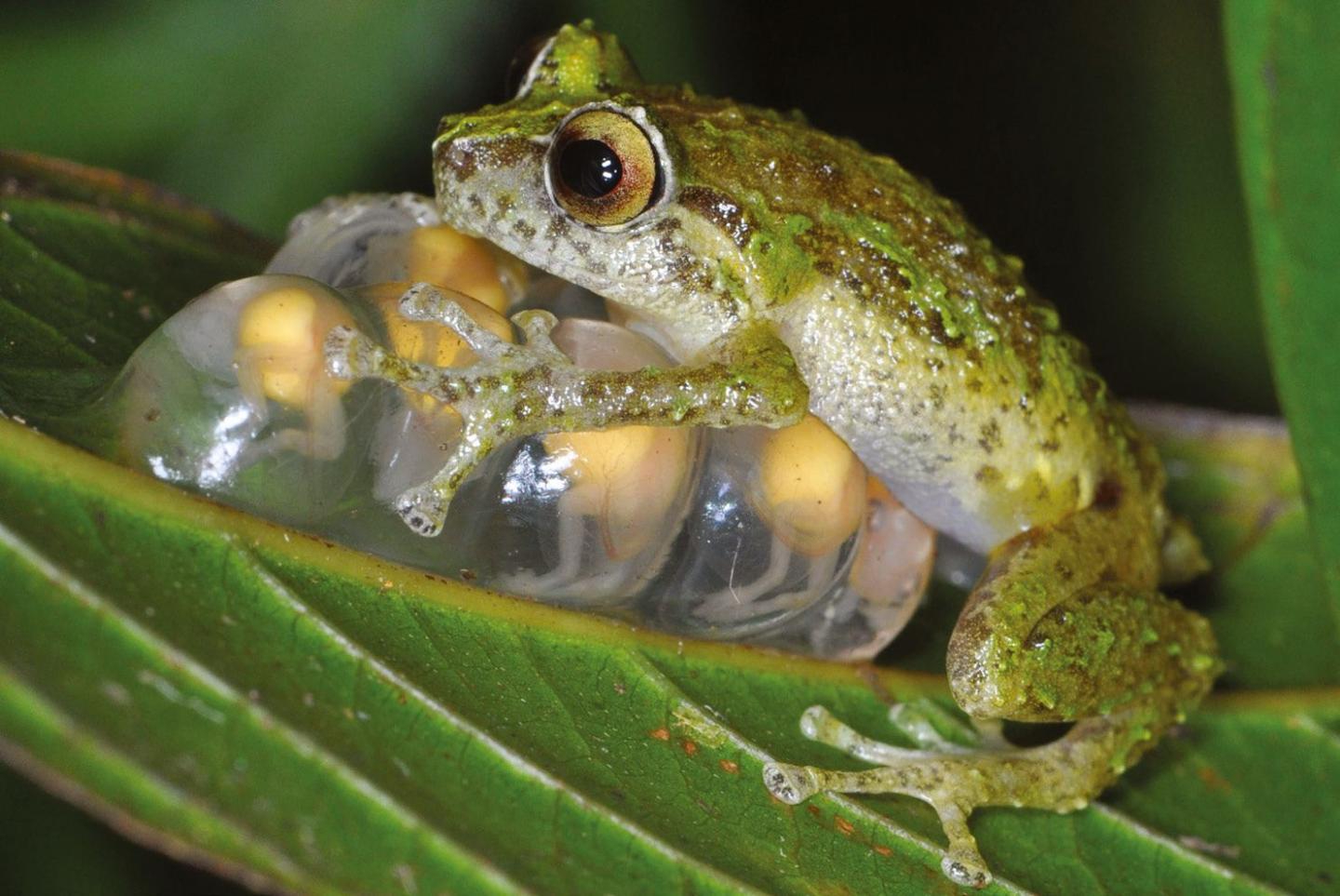An international team of researchers has a plan to keep New Guinea’s frogs safe from the species-destroying chytrid fungus

Credit: Stephen J. Richards
New Guinea is one of the only places in the world where frogs are safe from the species-destroying chytrid fungus. An international team of scientists has published a new paper that shows how to keep it that way, but they need help to carry out their plan.
The chytrid fungus has wiped out more than 90 frog species around the world, and it’s driving hundreds more towards extinction. New Guinea – the world’s largest tropical island, and home to 6% of all known frog species – is one of the last remaining refuges from the deadly infection.
A team of scientists led by researchers from Macquarie University and the University of New England in Australia think they know how to keep the island’s frogs safe, but they need support to establish a long-term program of monitoring and conservation.
Writing in the journal Frontiers in Ecology and the Environment, the group of 30 experts from Australia, the USA, China, Indonesia and Papua New Guinea calls for urgent action.
“You don’t often spot a conservation disaster before it happens and get the chance to stop it,” says Deborah Bower of the University of New England in Armidale, Australia, who is the first author of the article. “We know what needs to be done.”
The infectious chytrid fungus has been described as the most destructive pathogen known to science. It has destroyed more than 90 species of frog entirely and caused declines in almost 500 more.
The international pet trade helped the chytrid fungus spread rapidly from its origins in East Asia over recent decades, and it now infects frogs on every continent. It is one of the key reasons why 40% of the world’s frog species now face the threat of extinction.
New Guinea’s tropical climate and hundreds of native frog species make it an ideal environment for chytrid. But field tests have so far found no traces of the killer fungus.
“A lot of New Guinea’s frogs are closely related to Australian species that have been devastated by chytrid, so we expect they would be just as vulnerable,” says Simon Clulow at Macquarie University in Sydney, Australia, who leads the research team.
“Other New Guinea frog species are unusual because they hatch from eggs as fully formed frogs, rather than going through a tadpole stage, and we don’t know how chytrid will affect them.”
The team estimates that around 100 species of frog would be in danger if chytrid reaches New Guinea, and their decline could have huge impacts across the ecosystem as they are predators of insects and other small creatures but also prey for larger animals.
The research team includes international experts in frog conservation – including Lee Berger, the Australian who first discovered the chytrid fungus and showed it was responsible for frog species declines and extinctions – alongside local researchers with deep knowledge of the environment of New Guinea.
They have been studying frogs in New Guinea since 2015, and have already started working with zoos, universities and the Papua New Guinea government to build a program to keep captive frogs and store their sperm and eggs to preserve genetic diversity.
The team has developed a 5-step program of preparation, prevention, detection, response and recovery to keep the deadly fungus off New Guinea and to minimise the impact if it does arrive.
As well as preserving New Guinea’s frogs, the program would build local capacity in science, and disease surveillance and diagnosis that will have applications for animal and public health.
###
Media Contact
Michael Lucy
[email protected]
Related Journal Article
http://dx.





